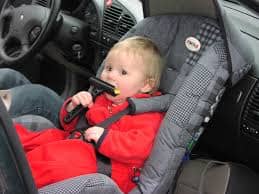Family Travel Made Easy: Important Dos and Don’ts When Traveling with Kids
By Chandan Basu Mallik

Stay safe on the road:
Safety should always be the priority when traveling with kids. The driver should ensure everyone is wearing seatbelts and that car seats are correctly installed.
In India, children under 18 are allowed to sit in the front seat, and there have been several instances of two or more minors sharing the front seat without wearing seatbelts. This is not safe for them in case of an accident.
Many new cars have sliding sunroofs. Parents are allowing their children to stand and stick their heads out of the vehicle, which is a dangerous option and can attract fines from cops.
Children should always be seated in the rear seats. Special baby seats are available for minor children or babies that can be attached using ISOFIX child seats, which have various options – 10-18kg or 18-25kg. Some manufacturers offer reclining baby seats that can be adjusted according to comfort and the child’s age to ensure a peaceful nap during trips.
Travel-specific preparations

Keep a small portable potty for kids in an easy-to-reach location in the vehicle. This is handy when the little ones have to use the toilet if no rest stops are available. Once the diaper or potty has been used, wrap it up and tie it up in a plastic bag to discard at a rest stop. Keep wet wipes within reach so we can wipe and go.
It is common to experience motion sickness during trips, so make provisions for towels, extra clothes, shoes, baby wipes, a sponge, a cleaning toothbrush, and soap.
Always keep a few nausea bags in case the child throws up or tends to do so. These are readily available from online stores like Amazon.
Route and schedule:
Estimate the travel time and stops before embarking on a road trip. Ensure rest breaks for the occupants and children, and maintain meal times.
Pack smart:
List essential items like clothes, shoes, snacks, toys, and medications. Children must be occupied and entertained, so keeping books, games, or tablets is not bad. A car seat organizer is advisable to keep these items in one place.
Break up the trip with stops:
Long-distance car journeys can be tiring for kids. If possible, encourage frequent stops to stretch your legs, use the restroom, or have a bite or refreshment.
Snacks and drinks:
Hungry and thirsty kids can quickly become impatient. Stock snacks and beverages to keep them satisfied throughout the journey. A cooler with ice packs to keep perishable items fresh is also advised in summer.
Take breaks to avoid drowsy driving, and be aware of your surroundings.
On the move:
Ensure doors and windows are locked. Activate the child lock for the door and cars with power windows.
How carmakers are meeting child safety norms
Several car companies, like Sweden-based Volvo, have long been acknowledged leaders in automotive safety, particularly child safety. Some of their regular child safety features include:

Integrated Booster Seats: Many cars have built-in booster seats for children aged 3 to 10. These seats provide extra comfort and proper seatbelt positioning to reduce the risk of injury.
Rear-Facing Child Seats: Carmakers like Volvo strongly advocate for rear-facing car seats. The company recommends that children ride in them as long as possible, as research studies show that this reduces the risk of serious injury in a crash.
Side Impact Protection: The Side Impact Protection System (SIPS) is a structural part designed to reinforce doors and airbags. It helps protect children from side impacts, which is critical during a crash.
Energy-Absorbing Seats: Modern car seats are designed to absorb energy during any accident, minimizing the impact on the body. This technology is vital for child passengers, who are more vulnerable than adults.
Child Safety Locks: All vehicles must have child safety locks on the rear doors, a mandatory safety feature that prevents children from opening the doors while the car is moving.
Airbag Technology: Car manufacturers now offer advanced airbag systems to protect occupants of all ages, including children. The system automatically adapts to the passenger’s size and weight, ensuring the airbag inflates safely without harming younger passengers.
Seatbelts: Seatbelt systems are now being designed for a child’s size, and they are easy to use correctly
Keep Doors and windows locked.
Almost every car today has a door child lock and power windows. The door locks are regular tabs on the car’s door frame (visible when you open the door) that prevent the child from opening the door from inside. The window locks cut power, making the operation of the glass panes impossible.
Do not leave your child alone in the car.
Never leave a kid unattended in a car, and never in a locked vehicle. We have had cases in the past where kids were left inside cars, presumably to keep them safe, and not get back to in time, leading to their deaths.
Look Around before you Start the Engine.
The Indian government has mandated rear-view cameras in every vehicle to save children from being injured by cars backing up. This happens often when you reverse your car without noticing. Also, speed limits should be respected near schools and hospitals. It cannot hurt to lose a few seconds of travel time.
Image Courtesy
The post uses all third-party images to make it reader-friendly. The author never claims ownership of any of them. Image courtesy is given to every image used in the story. Prime Avenue, a professional content writing agency, is dedicated to providing readers with the latest updates and information through quality content.
About the author:
British-Indian Chandan Basu Mallik has been an automotive petrol head and journalist/editor for over thirty years. He has worked in the UK and the Middle East and is currently in India. You can learn more about his work on his LinkedIn profile: https://www.linkedin.com/in/chandan-mallik-34aa47320/. You can write to Chandan at theprimeavenuekol@gmail.com